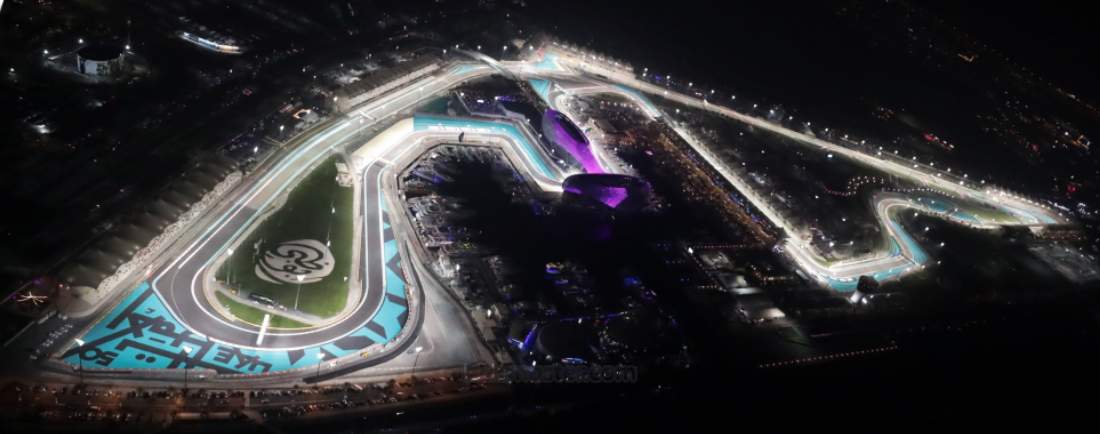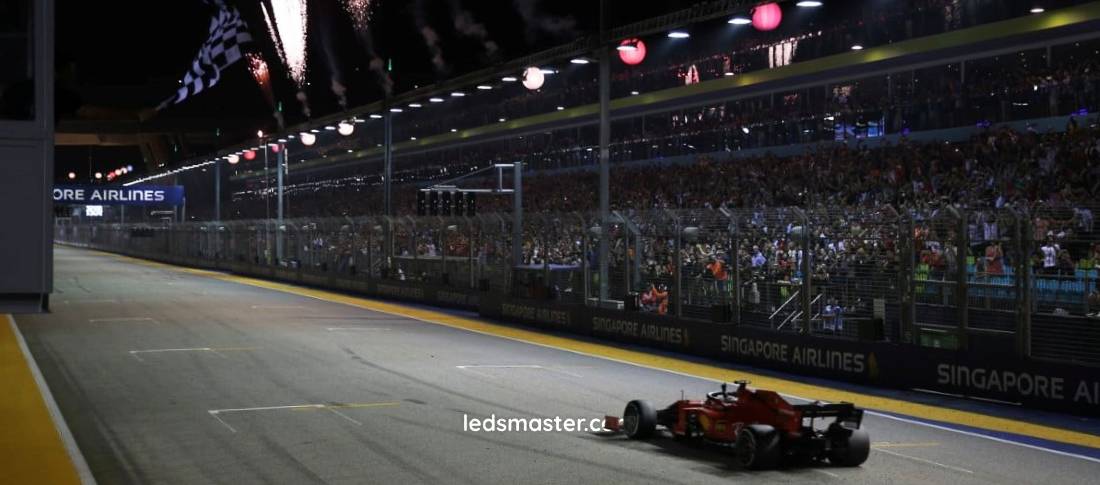Step up your race track’s illumination with our advanced LED fixtures designed for durability, uniform light distribution, and anti-glare properties. Engineered to enhance visibility and safety, our lighting solutions ensure a clear and consistent view of every corner and straightaway.
Get your complimentary lighting design today
From brightness and visibility to color accuracy, durability, safety features, and compliance with stringent standards, every aspect of race track lighting plays a crucial role in enhancing the competitive edge and ensuring the safety of all involved.

Table of Contents
ToggleEffective race track lighting ensure optimal visibility and safety across the entire track surface. Achieving consistent brightness levels is essential for both drivers and spectators, allowing for a seamless experience whether the race takes place during the day or at night. The introduction of high-intensity LED fixtures has revolutionized race track illumination, providing superior brightness that enhances visibility at all times.
These LED fixtures are strategically placed around the track to eliminate shadows and hot spots, ensuring that every corner, chicane, and straightaway is uniformly lit. Such meticulous planning helps maintain a steady flow of race activity, allowing drivers to navigate complex turns with greater confidence. With consistent lighting, they can make split-second decisions without being hindered by poorly lit areas.
Moreover, adjustable lighting solutions offer the flexibility needed to accommodate different weather conditions and track configurations. Rainy days or unexpected overcast conditions can reduce natural light levels, making it vital for race organizers to ensure that the artificial lighting system can adapt quickly to maintain optimal visibility. This adaptability is particularly beneficial during races that extend into the evening, where the shift from day to night can significantly impact the track’s visibility.
A well-designed lighting system enhances the racing experience by allowing spectators to follow the action closely. The brilliance of the LED lights brings the race to life, capturing the high-speed excitement that motorsports enthusiasts crave.
The technology behind LED lights excels at reproducing vivid and precise colors, which are critical for distinguishing various track markings, flags, and the rapid movements of vehicles. Accurate color rendering improves the visual clarity of the track environment, empowering drivers to navigate with a sense of precision and assurance.
Uniform color temperatures across all lighting fixtures ensure that the light distribution remains consistent throughout the entire track. This uniformity reduces distractions and helps drivers maintain their focus, allowing them to transition seamlessly through different sections of the track. Accurate colors can also help drivers quickly identify flags or signals from race officials, enabling them to react appropriately during crucial moments.
For spectators, enhanced color accuracy adds to the overall viewing experience. The vivid hues created by modern LED technology allow fans to appreciate the details of the race, from the colors of the cars to the track markings. This level of detail not only enhances the thrill of the event but also allows spectators to become more engaged in the action, heightening the overall atmosphere of the race.
Race tracks and their lighting systems are continually exposed to harsh outdoor elements, such as rain, wind, extreme temperatures, and debris from racing incidents. Therefore, the durability and weather resistance of lighting fixtures are vital considerations in their design and construction. Modern LED fixtures are engineered with robust materials and advanced construction techniques, significantly enhancing their resilience against environmental factors.
Weatherproof enclosures and seals protect the internal components of the lighting systems from moisture and dust, ensuring reliable performance in all conditions. Such features are essential, especially in regions that experience frequent rain or snow. Additionally, impact-resistant lenses and housings further safeguard against accidental damage, which can occur during high-speed racing events. This preservation of the lighting system’s integrity over extended periods of use translates into lower maintenance requirements and reduced operational downtime.
A lighting system that can withstand the rigors of racing environments allows event planners to focus on the race itself, rather than on troubleshooting lighting issues. This reliability contributes to the overall success of race events, allowing for a smoother execution of planned activities.
In the world of motorsports, safety is a paramount concern. Race track lighting plays a significant role in creating a safe racing environment for both drivers and spectators. Modern LED fixtures are equipped with anti-glare technology to minimize glare and light spillage, particularly during night races. This feature is especially valuable because glare can severely impair visibility, compromising the safety of everyone on the track.
Uniform lighting distribution reduces contrast variations across the track surface. Such consistency helps prevent sudden changes in visibility that might catch drivers off guard. With a well-lit track, drivers can anticipate upcoming turns and adjust their speeds accordingly, contributing to smoother race operations and reducing the risk of incidents caused by inadequate lighting.
Flicker-free operation and instant-on capabilities are additional advantages of LED fixtures. These features eliminate potential distractions and ensure continuous illumination throughout the duration of races. When drivers and spectators know that the lighting will not falter, it fosters an atmosphere of focus and concentration, enhancing safety for all participants.
Race track lighting systems must adhere to stringent regulatory standards and industry guidelines to ensure compliance with safety protocols and operational requirements. Various organizations, from international racing federations to local authorities, have established specific standards that dictate the design, installation, and operation of race track lighting systems.
LED fixtures are engineered to meet or exceed these standards, incorporating features such as adjustable lighting levels, remote monitoring capabilities, and energy-efficient designs that align with sustainability goals. Compliance with these standards is not only about ensuring the safety of participants but also about mitigating risks associated with regulatory non-compliance. Such adherence enhances the reputation and reliability of the racing venue, making it more appealing for future events.
Furthermore, complying with regulatory standards demonstrates a commitment to environmental stewardship. It helps optimize energy usage and reduces light pollution, contributing to a more sustainable operational model. By leveraging advanced lighting technologies and adhering to regulatory requirements, race track operators can gain a competitive advantage while ensuring high levels of safety and environmental responsibility.
The evolution of race track lighting reflects advances in technology and a growing understanding of the importance of visibility and safety in motorsports. In the past, race tracks relied heavily on traditional incandescent lighting, which offered limited brightness and poor color rendering capabilities. This lighting system often left drivers struggling to see adequately, especially in low-light conditions.
The introduction of high-intensity discharge (HID) lamps marked a improvement in race track illumination. HID lights provided brighter illumination than their incandescent predecessors, yet they still fell short regarding color accuracy and energy efficiency. Drivers and spectators often encountered challenges due to the limitations of this technology, highlighting the need for further advancements.
With the arrival of LED technology, a transformative change took place in race track lighting. LED fixtures are not only energy-efficient but also capable of producing high-quality light with exceptional color rendering. This advancement has allowed for more vibrant colors on the track, making it easier for drivers to recognize flags, track boundaries, and other essential signals during races.
As track designs have evolved, incorporating complex layouts, elevation changes, and varied surfaces, the need for adaptable lighting systems has become evident. LED fixtures can be adjusted to focus light where it is needed most, ensuring that even the most intricate sections of the track are adequately illuminated. This adaptability allows race tracks to provide a better experience for drivers and spectators alike.
As technology continues to advance, race track lighting systems have become increasingly sophisticated. Intelligent lighting solutions now incorporate sensors and controls that allow for dynamic adjustments based on real-time conditions. For example, lighting levels can be automatically increased during inclement weather, or adjusted for different times of day, ensuring that visibility remains optimized.
Remote monitoring capabilities have also become a standard feature in modern lighting systems. Operators can track the performance of lighting fixtures in real-time, allowing for proactive maintenance and quick identification of any issues. This technology not only improves the reliability of lighting systems but also enhances the overall safety of race events.
As the global focus shifts toward sustainability, the race track lighting industry is beginning to adopt eco-friendly practices. LED technology is inherently more energy-efficient than traditional lighting options, significantly reducing power consumption and carbon footprints. As race track operators seek to minimize their environmental impact, transitioning to LED lighting aligns perfectly with these sustainability goals.
In addition to energy efficiency, sustainable lighting solutions emphasize reducing light pollution. Modern fixtures are designed to direct light precisely where it is needed, minimizing spillage and glare that can disrupt local ecosystems and surrounding communities. By adopting responsible lighting practices, race track operators not only enhance the racing experience but also demonstrate a commitment to environmental responsibility.
Furthermore, the integration of renewable energy sources, such as solar power, is an avenue being explored by some race tracks. Utilizing solar energy to power lighting systems can further reduce reliance on traditional energy sources, promoting a more sustainable future for motorsports.
The design and implementation of race track lighting significantly impact the overall spectator experience. A well-lit track enhances visibility for fans in attendance, allowing them to follow the action more closely and immerse themselves in the excitement of the event. Whether they are in the grandstands or viewing from hospitality suites, spectators benefit from the clarity and color rendering that modern lighting solutions provide.
Moreover, the atmosphere created by effective lighting contributes to the overall ambiance of the event. Strategic lighting can highlight key moments, such as overtakes, crashes, or celebrations, drawing the attention of spectators and amplifying the emotional engagement of the event. The ability to adjust lighting levels for different segments of the race, such as practice, qualifying, and the main event, allows for a more dynamic viewing experience.
As race tracks continue to evolve, incorporating advanced lighting technologies will play a vital role in shaping the future of spectator engagement. Innovative solutions that blend entertainment with high-performance lighting will ensure that fans remain captivated, creating lasting memories associated with the thrill of motorsport events.

By embracing these trends, the motorsports industry can ensure that race track lighting remains at the forefront of technological advancements. This commitment ultimately enhances safety, visibility, and the overall experience for drivers and fans alike, creating a thrilling and unforgettable racing environment.
Race track lighting will continue to evolve, paving the way for a future where technology and sustainability coexist harmoniously. As advancements in lighting technology emerge, they will be accompanied by a heightened awareness of the need for environmental responsibility and safety. The intersection of these elements will define the future of motorsports, leading to improved experiences for all involved.
In this dynamic landscape, race track operators will shape the next generation of racing environments. By investing in high-quality lighting solutions that prioritize brightness, color accuracy, durability, and safety, they can ensure that every race remains an exhilarating spectacle for drivers and spectators alike.
The potential for innovation within race track lighting is immense, and as the industry continues to push the boundaries of what is possible, it will ultimately lead to a safer, more engaging, and more sustainable motorsport experience for everyone. Embracing these changes will not only enhance the immediate environment of the racetrack but also set the stage for future generations to enjoy the thrill of racing in an optimized and environmentally conscious way.
Advanced LED technology has revolutionized race track illumination by offering unparalleled brightness, color accuracy, durability, and safety features that enhance visibility and ensure a secure racing environment. Compliance with regulatory standards underscores the commitment to operational excellence and sustainability, further elevating the standing of race venues worldwide.
As technology continues to evolve, the future of race track lighting holds promise for even greater advancements in efficiency, flexibility, and environmental impact. By embracing these innovations, race track operators can continue to enhance the racing experience for drivers and spectators alike, setting new standards in safety, performance, and spectator engagement across the global motorsports landscape.